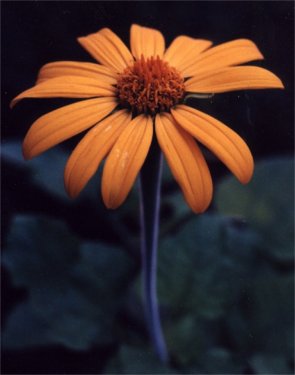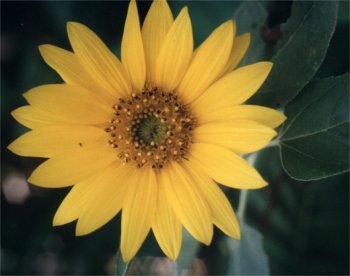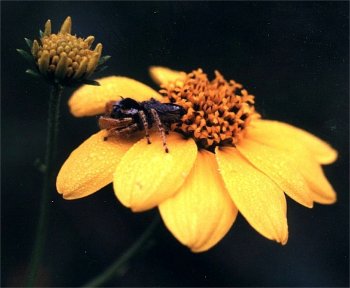Sunflowers
by Valerie (September 5, 2000)
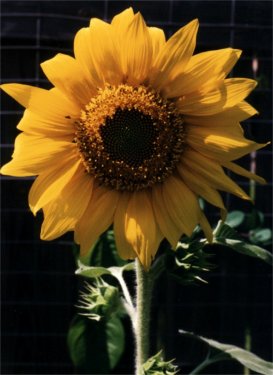
For big, bright and yellow, nothing competes with sunflowers. Real sunflowers belong to the genus Helianthus, but there are less closely related plants that are also referred to as sunflowers. These are all in the family Compositae, named for the fact that each "flower" is actually a lot of small flowers combined to produce one large bloom. The outer petals are each a ray flower and the inner, symmetrically arranged seed producing segments are called disk flowers.
The typical, cultivated sunflower (Helianthus sp.) almost always has a larger disk and produces more seeds than most wild plants. These annuals are easy to grow from seed, but their tall size and heavy blossoms sometimes make them fall over. In this photo, the disk flowers have opened in the outer part of the center, while the inner ones are still closed.
Mexican sunflowers (Tithonia rotundifolia) are usually red or orange, but sometimes occur in a gold variety. The stems and leaves are covered with a much softer fuzz than regular sunflowers, and they are very dark green. Another Garden Bits article is devoted to this species.
One of the most attractive sunflowers is Maximilian sunflower (Helianthus maximiliani), a perennial with less branching than most of the other wild sunflowers. The flowers tend to cluster at the top of long stems, three to eight feet tall, several of which grow from a thick tuberous root. There is a wide, rocky creek near our house which rarely has water in it. During the latter part of summer, if there has been sufficient rainfall, but not enough to turn the creek bed into a raging torrent, it is filled with these flowers.
Another perennial, plateau golden-eye (Viguiera dentata), is hardy, and produces a lot of flowers, but the numerous tall stems growing to six feet tend to fall over as the ends keep branching out with more blossoms. This plant is also called golden-eye sunflower. About mid-summer, several of the stems in our plants invariably die because some type of insect has burrowed into them and eaten out the middles. When I break off the stems, there is a lot of powdery "saw dust" inside, but I haven't seen what kind of insect does the damage. The dew-covered blossom in the photo shown here is host to a jumping spider, which wouldn't normally stay in the same place for very long; it just happened to be there when I took the picture.
The final plant is the common sunflower (Helianthus annuus), an eight foot tall annual that grows everywhere around here. The blossoms are large, with very dark brown disks, and insects are always around them. The seeds are popular with birds, who often perch on the stiff, dry stems and pluck them out one by one. This flower reliably reseeds itself with no intervention, and most of the seeds fall directly to the ground under the plant so it can be counted on to come up in the same place each year. The hairs on the stems are very prickly and removing dead plants can be rather painful.
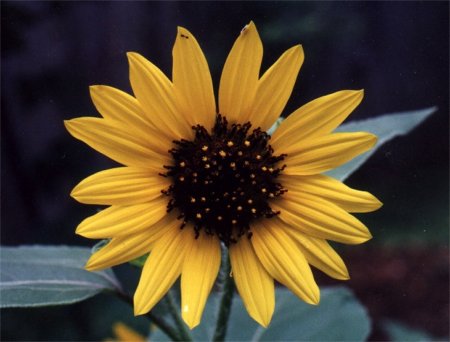 |
